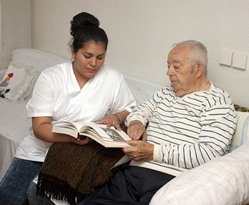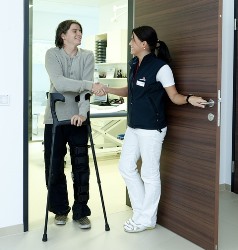How to Select the Best RN Degree Program near Salem South Dakota
 Finding the right nursing program near Salem SD may seem like a complex project, especially if you don’t know what to search for in a good degree program. As you may presently understand, to practice as a registered nurse, you must receive the proper education and training to become licensed. So it is vitally important that you study and evaluate the qualifications of each school you are contemplating before enrolling in your ultimate selection. Unfortunately, too many prospective students base their determination solely on the price of tuition and the distance of the school. Choosing the least costly program or the one that is closest to your house is most likely not the most reliable way to select a nursing program. There are several key additional things to explore before you make a decision where to attend classes. But before we explore that checklist, let’s first look at the nursing degree choices that are offered along with what the jobs of nurses are in our medical care system.
Finding the right nursing program near Salem SD may seem like a complex project, especially if you don’t know what to search for in a good degree program. As you may presently understand, to practice as a registered nurse, you must receive the proper education and training to become licensed. So it is vitally important that you study and evaluate the qualifications of each school you are contemplating before enrolling in your ultimate selection. Unfortunately, too many prospective students base their determination solely on the price of tuition and the distance of the school. Choosing the least costly program or the one that is closest to your house is most likely not the most reliable way to select a nursing program. There are several key additional things to explore before you make a decision where to attend classes. But before we explore that checklist, let’s first look at the nursing degree choices that are offered along with what the jobs of nurses are in our medical care system.
Request Free Information on Nursing Schools Below
Nursing Degree Options
There is more than one degree option to choose from to become a nurse. And in order to become a Registered Nurse (RN), a student must enroll in an accredited school and program. A nursing student can receive a qualifying degree in as little as 2 years, or continue on to obtain a graduate degree for a total of 6 years. Following are some short summaries of the nursing degrees that are available to aspiring students in the Salem SD area.
- Associates Degree. The Associate Degree in Nursing (ADN) is commonly a 2 year program made available by community colleges. It preps graduates for an entry level position in nursing in medical centers including hospitals, clinics or nursing homes. Many employ the ADN as an entry into nursing and subsequently earn a higher degree.
- Bachelor’s Degree. The Bachelor of Science in Nursing (BSN) provides more extensive training than the ADN. It is usually a 4 year program offered at colleges and universities. Licensed RNs may be able to complete an accelerated program based on their past training or degree and professional experience (RN to BSN). Those applying to the program might want to advance to a clinical or administrative position, or be more competitive in the employment market.
- Master’s Degree. The Master of Science in Nursing (MSN) is generally a two year program after achieving the BSN. The MSN program offers specialization training, for example to become a nurse practitioner or focus on administration, management or teaching.
When a graduating student has acquired one of the above degrees, he or she must pass the National Council Licensure Examination for Registered Nurses (NCLEX-RN) so as to become licensed. Further requirements for licensing fluctuate from state to state, so make sure to check with the South Dakota board of nursing for any state requirements.
Click Here to Get Free Information on Nursing Schools Near You!
Why Enter the Nursing Profession?
 Nurses are an indispensable part of a Salem SD medical team, and for a large number of patients, their primary care providers. A nursing career can lead to a number of opportunities, including healthcare education, research and specialty areas of practice. Nurses go into the profession for many reasons, among the most significant are its practical and personal advantages. Nurses provide direct, one-on-one care to patients. Most individuals in a hospital or home care environment have more contact with nurses than with physicians. Nurses frequently go into the profession due to a desire to tend to the needs of patients, including in instances of short-term treatment of illness and prolonged care of chronic ailments. This humanistic side of the medical profession, as opposed to the research or analytical related aspects, is appealing to many who choose to enter into a career in nursing. Nurses have a wide range of applicable skills and can choose from a variety of work settings, such as nursing homes, doctor’s offices, medical clinics, community centers and hospitals. Also, nurses can progress into a variety of specialties, including addictions, critical care, neonatology and genetics. While many nurses provide direct patient care, others opt to be teachers, policy advisers or pharmaceutical representatives.
Nurses are an indispensable part of a Salem SD medical team, and for a large number of patients, their primary care providers. A nursing career can lead to a number of opportunities, including healthcare education, research and specialty areas of practice. Nurses go into the profession for many reasons, among the most significant are its practical and personal advantages. Nurses provide direct, one-on-one care to patients. Most individuals in a hospital or home care environment have more contact with nurses than with physicians. Nurses frequently go into the profession due to a desire to tend to the needs of patients, including in instances of short-term treatment of illness and prolonged care of chronic ailments. This humanistic side of the medical profession, as opposed to the research or analytical related aspects, is appealing to many who choose to enter into a career in nursing. Nurses have a wide range of applicable skills and can choose from a variety of work settings, such as nursing homes, doctor’s offices, medical clinics, community centers and hospitals. Also, nurses can progress into a variety of specialties, including addictions, critical care, neonatology and genetics. While many nurses provide direct patient care, others opt to be teachers, policy advisers or pharmaceutical representatives.
Registered Nurse Job Functions
 Registered nurses are the primary occupation in the healthcare delivery system. RNs practice in numerous different medical environments, such as Salem SD hospitals, private practices, outpatient clinics, nursing homes and even schools. Their basic function is to assist doctors in the treatment of their patients. Having said that, the specific duties of a registered nurse will depend on their job or specialization along with where they work. A portion of the duties of an RN may include:
Registered nurses are the primary occupation in the healthcare delivery system. RNs practice in numerous different medical environments, such as Salem SD hospitals, private practices, outpatient clinics, nursing homes and even schools. Their basic function is to assist doctors in the treatment of their patients. Having said that, the specific duties of a registered nurse will depend on their job or specialization along with where they work. A portion of the duties of an RN may include:
- Administering medications
- Overseeing patients
- Performing physical examinations
- Coordinating care
- Overseeing LPNs, LVNs and nurse aides
- Informing patients and their families
- Taking care of health records and charts
Nurses with a higher degree may have more complex job duties and accountabilities. Nurse practitioners (NP), for instance, must hold a Master’s Degree and often work more independently than their RN counterparts. They can deliver primary or specialty care services, prescribe medications, and diagnose and treat basic illnesses or injuries.
Nursing Online Programs
 Attending nursing schools online is becoming a more popular way to receive training and earn a nursing degree. Some schools will require attending on campus for part of the training, and nearly all programs call for a specified number of clinical rotation hours performed in a local healthcare center. But since the rest of the training may be accessed online, this method may be a more accommodating solution to finding the time to attend school for some Salem SD students. Concerning tuition, many online degree programs are less costly than other on campus alternatives. Even supplemental expenses such as for commuting and study materials can be reduced, helping to make education more affordable. And a large number of online programs are accredited by organizations like the Commission on Collegiate Nursing Education (CCNE) for BSN and MSN degrees. So if your job and family responsibilities have left you with limited time to pursue your academic goals, perhaps an online nursing school will make it easier to fit a degree into your active schedule.
Attending nursing schools online is becoming a more popular way to receive training and earn a nursing degree. Some schools will require attending on campus for part of the training, and nearly all programs call for a specified number of clinical rotation hours performed in a local healthcare center. But since the rest of the training may be accessed online, this method may be a more accommodating solution to finding the time to attend school for some Salem SD students. Concerning tuition, many online degree programs are less costly than other on campus alternatives. Even supplemental expenses such as for commuting and study materials can be reduced, helping to make education more affordable. And a large number of online programs are accredited by organizations like the Commission on Collegiate Nursing Education (CCNE) for BSN and MSN degrees. So if your job and family responsibilities have left you with limited time to pursue your academic goals, perhaps an online nursing school will make it easier to fit a degree into your active schedule.
Questions to Ask Nursing Schools
 Now that you have decided on which nursing degree to pursue, along with whether to attend your classes on campus near Salem SD or on the web, you can use the following guidelines to begin narrowing down your options. As you no doubt are aware, there are many nursing schools and colleges within South Dakota and the United States. So it is necessary to lower the number of schools to choose from so that you will have a manageable list. As we previously discussed, the location of the school along with the expense of tuition are undoubtedly going to be the first two things that you will look at. But as we also stressed, they should not be your only qualifiers. So before making your final selection, use the following questions to see how your pick measures up to the other programs.
Now that you have decided on which nursing degree to pursue, along with whether to attend your classes on campus near Salem SD or on the web, you can use the following guidelines to begin narrowing down your options. As you no doubt are aware, there are many nursing schools and colleges within South Dakota and the United States. So it is necessary to lower the number of schools to choose from so that you will have a manageable list. As we previously discussed, the location of the school along with the expense of tuition are undoubtedly going to be the first two things that you will look at. But as we also stressed, they should not be your only qualifiers. So before making your final selection, use the following questions to see how your pick measures up to the other programs.
- Accreditation. It’s a good idea to make sure that the degree or certificate program along with the school is accredited by a U.S. Department of Education recognized accrediting agency. In addition to helping confirm that you receive a premium education, it may assist in obtaining financial aid or student loans, which are oftentimes not offered in Salem SD for non-accredited schools.
- Licensing Preparation. Licensing prerequisites for registered nurses vary from state to state. In all states, a passing score is needed on the National Council Licensure Examination (NCLEX-RN) in addition to graduation from an accredited school. Many states require a specified number of clinical hours be performed, as well as the passing of additional tests. It’s essential that the school you are attending not only provides an outstanding education, but also readies you to satisfy the minimum licensing standards for South Dakota or the state where you will be working.
- Reputation. Look at online rating services to see what the reviews are for each of the schools you are looking into. Ask the accrediting organizations for their reviews as well. Additionally, contact the South Dakota school licensing authority to check out if there are any complaints or compliance issues. Finally, you can speak with some Salem SD healthcare organizations you’re interested in working for after graduation and ask what their opinions are of the schools as well.
- Graduation and Job Placement Rates. Find out from the RN programs you are looking at what their graduation rates are as well as how long on average it takes students to finish their programs. A low graduation rate may be an indication that students were dissatisfied with the program and dropped out. It’s also important that the schools have high job placement rates. A high rate will not only verify that the school has a good reputation within the Salem SD medical community, but that it also has the network of relationships to help students obtain a position.
- Internship Programs. The most ideal way to get experience as a registered nurse is to work in a clinical setting. Almost all nursing degree programs require a specified number of clinical hours be completed. Many states have minimum clinical hour requirements for licensing too. Check if the schools have associations with Salem SD hospitals, clinics or labs and assist with the placing of students in internships.
Nursing Education Programs Salem SD
Guide to RN Programs Online Salem South Dakota
Choosing the ideal nursing college is probably the most crucial phase to starting a new career in the healthcare field. There are many variables that you must take into account when picking a nursing school. These factors will be prioritized differently depending on your current career goals, lifestyle, and economic situation. As we have highlighted within this content, it is important that you select a nursing school and a degree program that are both accredited and have exceptional reputations within the healthcare community. You originally came to this website due to your interest in Guide to RN Programs Online and wanting more information on the topic ADN Nursing.. However, by using our list of qualifying questions, you will be able to produce a shortlist of schools to pick from so that you can make your ultimate selection. And with the right degree and training, combined with your dedication and ambition to succeed, you can become a practicing nurse in Salem SD.
More South Dakota Nursing Locations
Salem, South Dakota
Salem was founded in 1880 and named after the postmaster's hometown of Salem, Massachusetts.[8] Salem at one time was called Melas ('Melas' is Salem spelled backwards). This was to prevent confusion with the now non-existent community of Salena, South Dakota.[9]
As of the census[3] of 2010, there were 1,347 people, 567 households, and 362 families living in the city. The population density was 1,086.3 inhabitants per square mile (419.4/km2). There were 667 housing units at an average density of 537.9 per square mile (207.7/km2). The racial makeup of the city was 98.8% White, 0.1% African American, 0.1% Native American, 0.6% from other races, and 0.4% from two or more races. Hispanic or Latino of any race were 1.9% of the population.
There were 567 households of which 29.1% had children under the age of 18 living with them, 53.3% were married couples living together, 7.2% had a female householder with no husband present, 3.4% had a male householder with no wife present, and 36.2% were non-families. 33.2% of all households were made up of individuals and 18.2% had someone living alone who was 65 years of age or older. The average household size was 2.27 and the average family size was 2.90.
